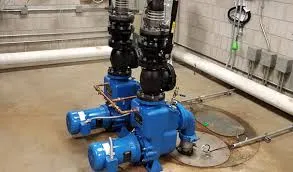English
- Afrikaans
- Albanian
- Amharic
- Arabic
- Armenian
- Azerbaijani
- Basque
- Belarusian
- Bengali
- Bosnian
- Bulgarian
- Catalan
- Cebuano
- Corsican
- Croatian
- Czech
- Danish
- Dutch
- English
- Esperanto
- Estonian
- Finnish
- French
- Frisian
- Galician
- Georgian
- German
- Greek
- Gujarati
- Haitian Creole
- hausa
- hawaiian
- Hebrew
- Hindi
- Miao
- Hungarian
- Icelandic
- igbo
- Indonesian
- irish
- Italian
- Japanese
- Javanese
- Kannada
- kazakh
- Khmer
- Rwandese
- Korean
- Kurdish
- Kyrgyz
- Lao
- Latin
- Latvian
- Lithuanian
- Luxembourgish
- Macedonian
- Malgashi
- Malay
- Malayalam
- Maltese
- Maori
- Marathi
- Mongolian
- Myanmar
- Nepali
- Norwegian
- Norwegian
- Occitan
- Pashto
- Persian
- Polish
- Portuguese
- Punjabi
- Romanian
- Russian
- Samoan
- Scottish Gaelic
- Serbian
- Sesotho
- Shona
- Sindhi
- Sinhala
- Slovak
- Slovenian
- Somali
- Spanish
- Sundanese
- Swahili
- Swedish
- Tagalog
- Tajik
- Tamil
- Tatar
- Telugu
- Thai
- Turkish
- Turkmen
- Ukrainian
- Urdu
- Uighur
- Uzbek
- Vietnamese
- Welsh
- Bantu
- Yiddish
- Yoruba
- Zulu
Telephone: +86 13120555503
Email: frank@cypump.com
Dec . 03, 2024 19:38 Back to list
Understanding the Function and Importance of Basement Ejector Pumps in Home Drainage Systems
Understanding Basement Ejector Pumps A Comprehensive Guide
Basement ejector pumps are essential plumbing devices designed to remove wastewater and sewage from below-grade areas, such as basements and crawl spaces. Faced with the risk of flooding or sewage backflow, homeowners often turn to ejector pumps as a vital component of their home's plumbing system. In this article, we will delve into the workings, installation, maintenance, and benefits of basement ejector pumps.
How Ejector Pumps Work
Ejector pumps utilize a motorized mechanism to discharge wastewater away from the basement and into the main sewage line. These pumps are typically installed in pits or sump basins, where they collect wastewater from fixtures like sinks, toilets, or washing machines located below the main sewer line.
Once the wastewater reaches a certain level in the basin, the pump activates. The motor spins an impeller, creating a vacuum that draws the wastewater into the pump. The liquid is then propelled upward through pipes and discharged into the home's sewer system or a septic tank, depending on the dwelling’s configuration and local regulations.
Installation of Ejector Pumps
Installing a basement ejector pump requires careful planning and consideration. Although many homeowners opt for DIY installation, hiring a licensed plumber is recommended to ensure proper setup and compliance with local building codes.
The first step in the installation process is selecting an appropriate location for the pump. This typically involves identifying the lowest point in the basement where water accumulation occurs. Next, a sump pit is excavated, and the ejector pump is positioned before being connected to the necessary plumbing lines. Proper venting is also essential to prevent sewer gases from entering the home.
basement ejector pump

Maintenance of Ejector Pumps
Routine maintenance is crucial to ensure the longevity and efficiency of ejector pumps. Homeowners should periodically inspect the pump and sump basin for debris or obstructions that could impede operation. Additionally, it’s important to check the power supply, as many ejector pumps rely on electricity and may require a battery backup in case of power outages.
Another key aspect of maintenance is annual professional inspections. A qualified technician can assess the pump's performance, check the floats and check valves, and replace any worn or damaged components. Taking these preventative measures can extend the life of the pump and avoid costly repairs down the line.
Benefits of Basement Ejector Pumps
The benefits of installing a basement ejector pump are numerous. Primarily, they help protect your home from water damage and sewage backup, which can lead to costly repairs and health hazards. By effectively managing wastewater, ejector pumps promote a cleaner and healthier living environment.
Additionally, ejector pumps can increase the functionality of your basement. With a reliable system in place to manage waste, homeowners have the freedom to install bathrooms, laundry rooms, or wet bars in their basements without fear of plumbing issues.
Conclusion
Basement ejector pumps play a crucial role in safeguarding homes against water damage and sewage problems. Understanding their function, installation, maintenance requirements, and benefits can empower homeowners to make informed decisions about their plumbing systems. Whether you're considering a new installation or need to maintain an existing pump, taking proper steps will ensure your pump operates efficiently, providing peace of mind and protection for years to come. Investing in a quality ejector pump is undoubtedly a wise choice for any homeowner looking to enhance the safety and usability of their basement space.
-
ISG Series Vertical Pipeline Pump - Chi Yuan Pumps Co., LTD.|High Efficiency, Energy Saving, Low Noise
NewsJul.30,2025
-
ISG Series Vertical Pipeline Pump- Chi Yuan Pumps|High Efficiency&Low Noise
NewsJul.30,2025
-
ISG Series Vertical Pipeline Pump-Chi Yuan Pumps Co., LTD.|High Efficiency&Energy Conservation
NewsJul.30,2025
-
ISG Series Vertical Pipeline Pump - Chi Yuan Pumps Co., LTD.|Advanced Hydraulic Design&Energy-Efficient Solutions
NewsJul.30,2025
-
ISG Series Vertical Pipeline Pump - Chi Yuan Pumps Co., LTD.
NewsJul.30,2025
-
ISG Series Vertical Pipeline Pump - Chi Yuan Pumps Co., LTD.|energy-efficient fluid handling&industrial durability
NewsJul.30,2025










